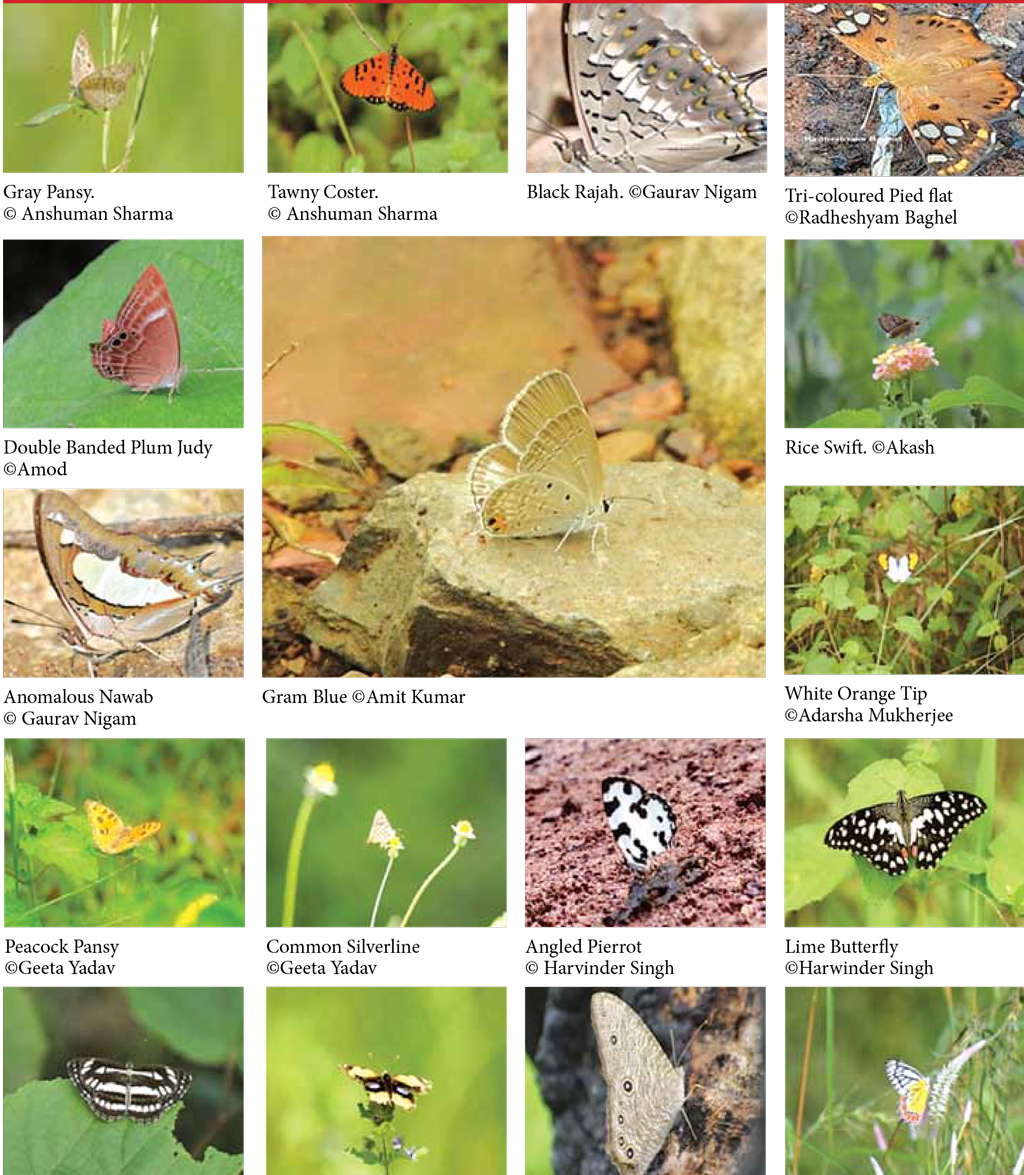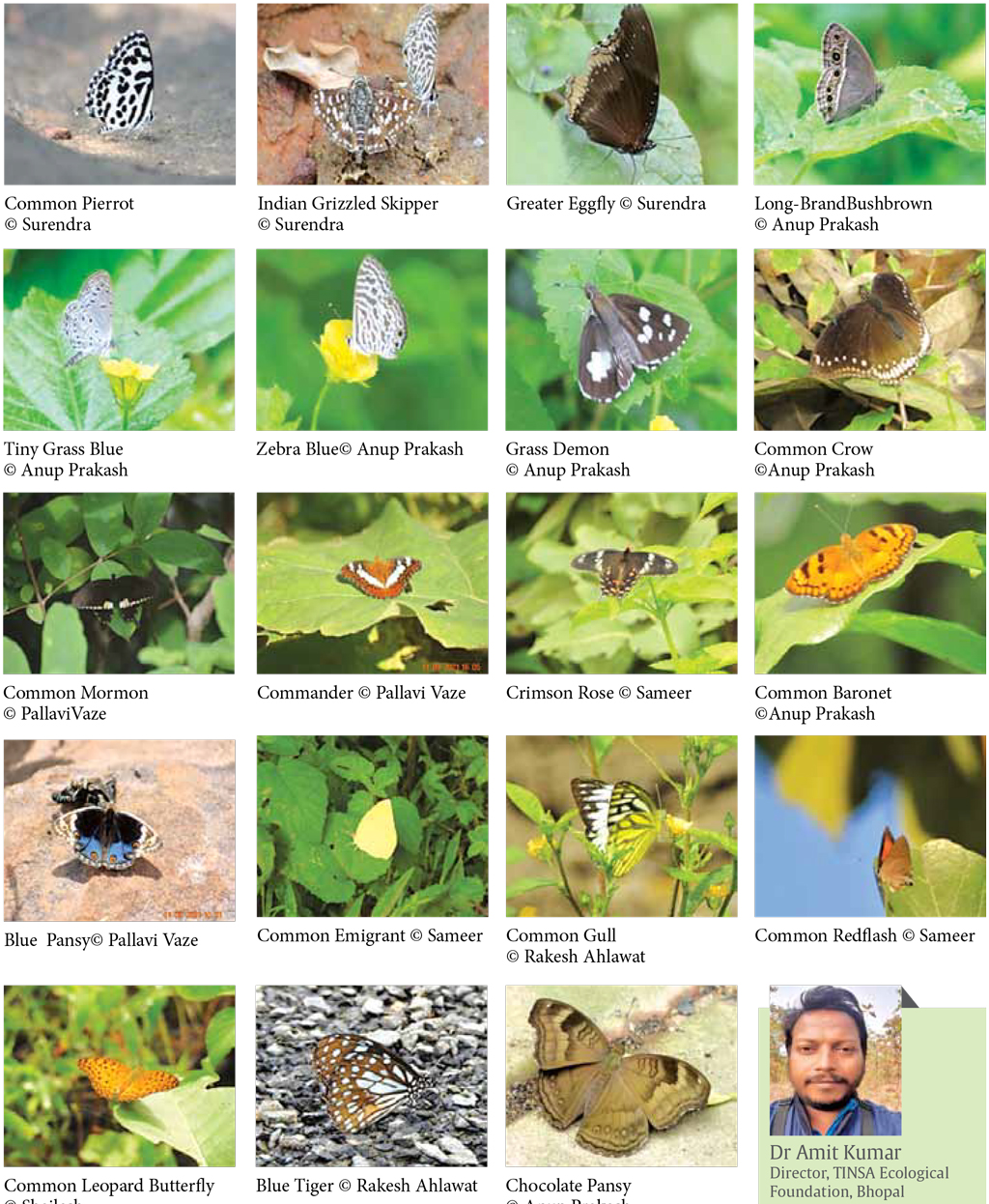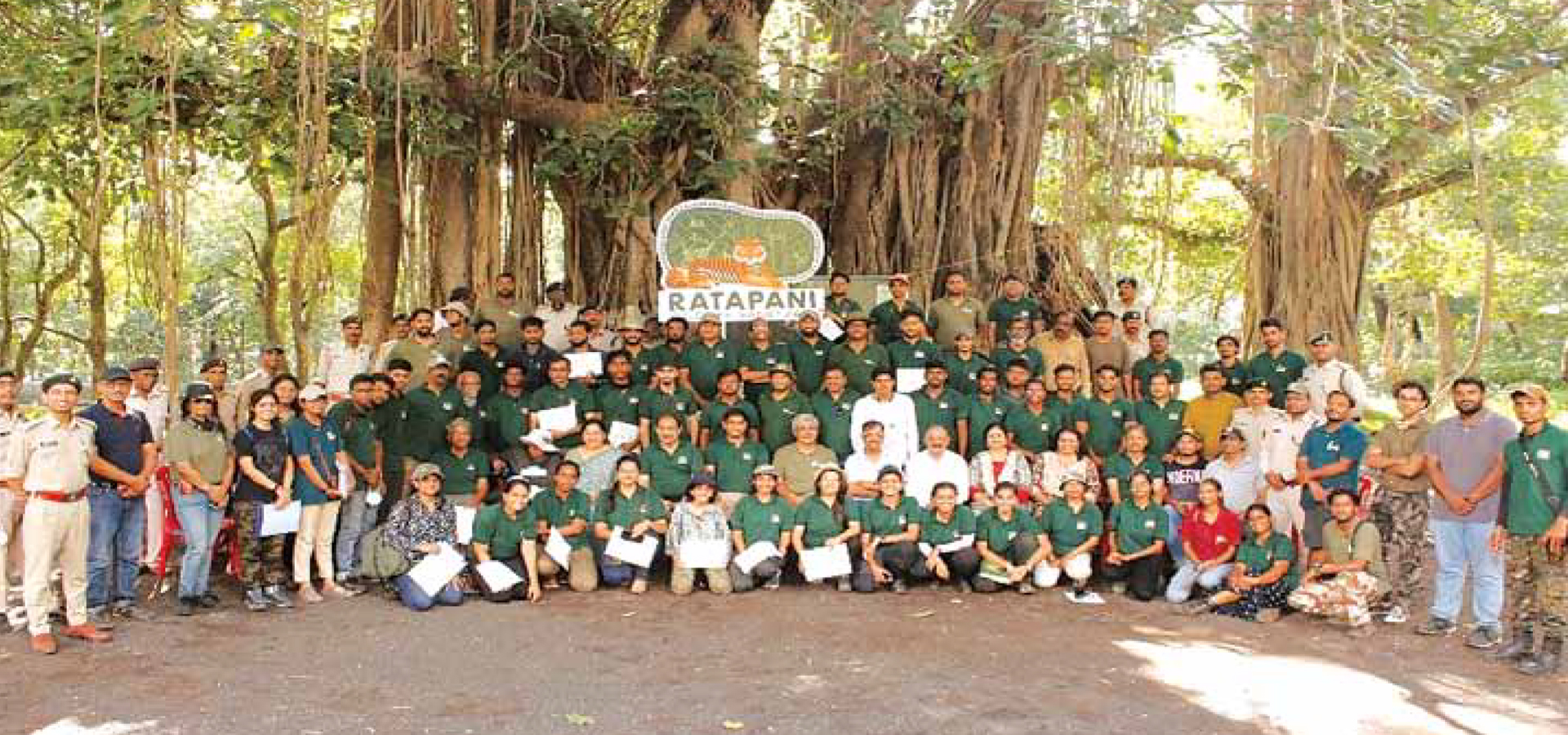
First Butterfly Survey at Ratapani Wildlife Sanctuary, 2021
By : Dr Amit Kumar

Ratapani Wildlife Sanctuary is located in the outskirts of the capital city of Madhya Pradesh it is a nice sanctuary with potential of creating history as it proposed Tiger Reserve too with a promising number of Tigers.
The Cover Page of our Magazine is featuring the newly launched logo of the Sanctuary, the logo not only introduces the visitors to the ten thousand years of history of Ratapani and its sorrounding areas, but also depicts the uniqueness and specialities of the region. The shape of the stone is based on the rocks and caves of Bhimbetka. The images of the wild animals on the stone are taken from the rock paintings found there and depict the peaceful coexistence of humans and wild animals .
The tiger occupies the centre space of the chinh (Symbol or Logo) and is the main attraction of the sanctuary. The number of tigers in the sanctuary are over 40 which is much more than those found in other National parks. The outer part of the stone shows a human chain which shows the peaceful coexistence of humans and wild animals and the importance of the cooperation and participation of the locals in wildlife conservation. With their help, these tigers and wild animals have been living safely and will continue to do so.
Ratapani Wildlife Sanctuary is located in the Raisen district of Madhya Pradesh, which is a part of the Vindhyan Range in Central India. Ratapani WLS has one of the finest teak forests in the state.
The forest of Ratapani is dry deciduous and moist deciduous type, with teak (Tectona grandis) as the main tree species. About 55% of the area is covered by teak. The remaining mixed forests consist of various dry deciduous species.
The sanctuary is rich in flora and fauna and a wide variety of birds and mammals consider it their home.
The total forest area is 825.90 square kilometers (318 sq mi) and the landscape is undulating, with hills, plateaus, valleys, and plains. Carnivores in the sanctuary include Tiger, Leopard, Dhole, Hyena, Jackal, and Fox, and the herbivores include Chital, Sambar, Nilgai, Four-horned Antelope, Langur, and wild boar, and primates: Langur and Rhesus macaque.
The omnivorous sloth bear is also seen often. Smaller animals like squirrels, mongooses, gerbils, porcupines, hares, etc. are of common occurrence. Among reptiles, important species include different kinds of lizards, chameleons, snakes, etc. Among snakes, cobra, python, viper, krait, etc. are common. More than 150 species of birds are seen here.
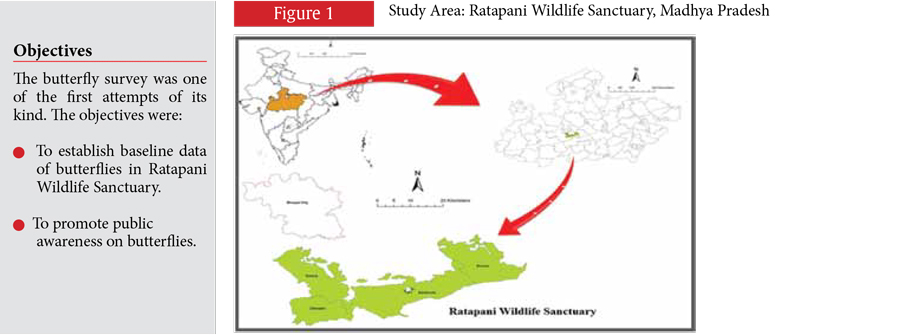
The first butterfly survey was organized in Ratapani Wildlife Sanctuary, Madhya Pradesh from 10th to 12th September 2021. The survey was a collaborative effort of the M.P. Forest Department, TINSA Ecological Foundation (a Bhopal-based NGO), and Wild Warriors (an Indore-based NGO).
The event commenced on 10th September 2021, with the arrival of the participants from different states.
The orientation was conducted the same day followed by the introduction to the methodology adopted for the survey by Ms. Pinal Patel (President), TINSA Ecological Foundation, followed by the importance of the butterflies and their ecological importance by Mr. Sameer Kumar (Vice-President), TINSA Ecological Foundation. Mr. Vijay Kumar, DFO, Obedullaganj, briefed the volunteers about the survey and their expectations from the survey, and the takeaways for the participants from one of the first surveys conducted in the Ratapani WLS.
The Chief Guest for the day were Mr. Aseem Shrivastava (PCCF). Mr. N.S. Dungriyal (Retd. APCCF), Mr. K. Raman (Retd. APCCF) and Mr. Shubhranjan Sen (APCCF) joined the volunteers to enhance their zeal and enthusiasm during the survey.
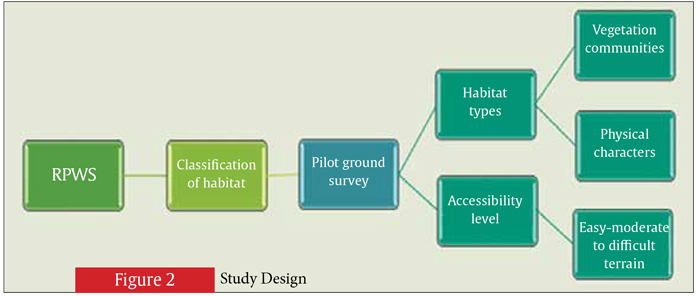
The butterfly survey was designed using repetition scientific approach.
The survey design was an attempt to incorporate scientific data collection methods into the citizen science initiative to get the best of the possible scenarios. Sampling units were various trails identified in the four ranges of the sanctuary. Trails were identified with the help of the forest ground staff and Google Earth imagery. The final selection of the trails was based on the number of volunteers, accessibility of trails from camps, and butterfly diversity at these trails during the pilot survey. Habitat types were also considered while setting up trails and selecting the same. Trails were categorized depending on the physical characteristics, vegetation structure and composition, and difficulty level of trails. These trails were then allocated to different volunteer groups considering their level of expertise, fitness level, age, and accommodation available at camps. Each team was created in such a manner that each team had one expert, one photographer/wildlife enthusiast, and one amateur. A total of 88 nature enthusiasts from 14 states volunteered in the survey. The participants were divided into 34 teams with 2-3 volunteers (an expert, a photographer, and an amateur) in each team accompanied by forest staff. The teams were allotted different camps in the four ranges. Each team had to cover a maximum of 3 and a minimum of 2 trails in two mornings and an evening session on 11th and 12th September 2021. The Kml file of the trails was provided to the teams in advance which they followed on the Locus map application on their mobile phones for navigation.
Butterfly Survey Method
The butterfly sampling was done using the “Pollard’s walk”, a type of transect walk primarily used for butterfly surveys, where the observers record butterflies within a 2.5-meter band on both sides of a transect while walking at a slow and steady pace and 5 meters ahead of the walk.

The observations were recorded in the datasheet provided which entailed the details of the butterfly species, their count, activity pattern, and remarks on the host plant species.
Conclusion Ceremony
At the end of the survey, a checklist of 104 species of butterflies were obtained which had a few important records of species found in the study area, namely Crimson Rose, Plum Judy, Double-branded Plum Judy, Common Short Silverline, Common Red Flash, Vindhyan Bob, Painted Jezebel, Common Tree Brown, etc. Grass Jewel (size ranges from 15- 22 mm), the smallest butterfly was sighted in the survey. The survey concluded with certificate distribution and keynotes from the Chief Guests, Mr. K. Raman (Retd. APCCF), Mr. Sanjay Shukla (APCCF), and Mr. Ramnish Geer (Joint Director, CBI), and a vote of thanks by the DFO, Mr. Vijay Kumar.
Results
During the butterfly survey, a total of 15636 individuals of butterflies were observed belonging to 100 species and six families of butterflies. 4 other species of butterflies were also observed beyond the trail survey. The results suggest that Bineka range was having the maximum number of butterfly species i.e. 79 species followed by Dahod (75), Barkheda (59) and Delawari (52).
Butterfly population at Ratapani was found to be dominated by a small number of species. Around 50% of the total number of individuals sampled during the survey belonged to only 2 species which are Common Grass Yellow (RA=42.60%) and Zebra Blue (RA=9.62%). Butterfly diversity was also found to be fair only (H=2.62) but not good.
The results of the present study give us an insight into the status of biodiversity of Ratapani Wildlife Sanctuary. These results should be studied carefully due to its less robustness. It was the first of its kind of citizen science initiative in this landscape. While inferring these results, we need to keep into consideration aspects like number of replications, observer’s efficiency, how efficiently the survey methodology was followed by the volunteers and lack of seasonal data. However, this study still is able to guide us in the right direction in conserving the butterfly population.
Appendix I: List of Butterflies observed during the survey
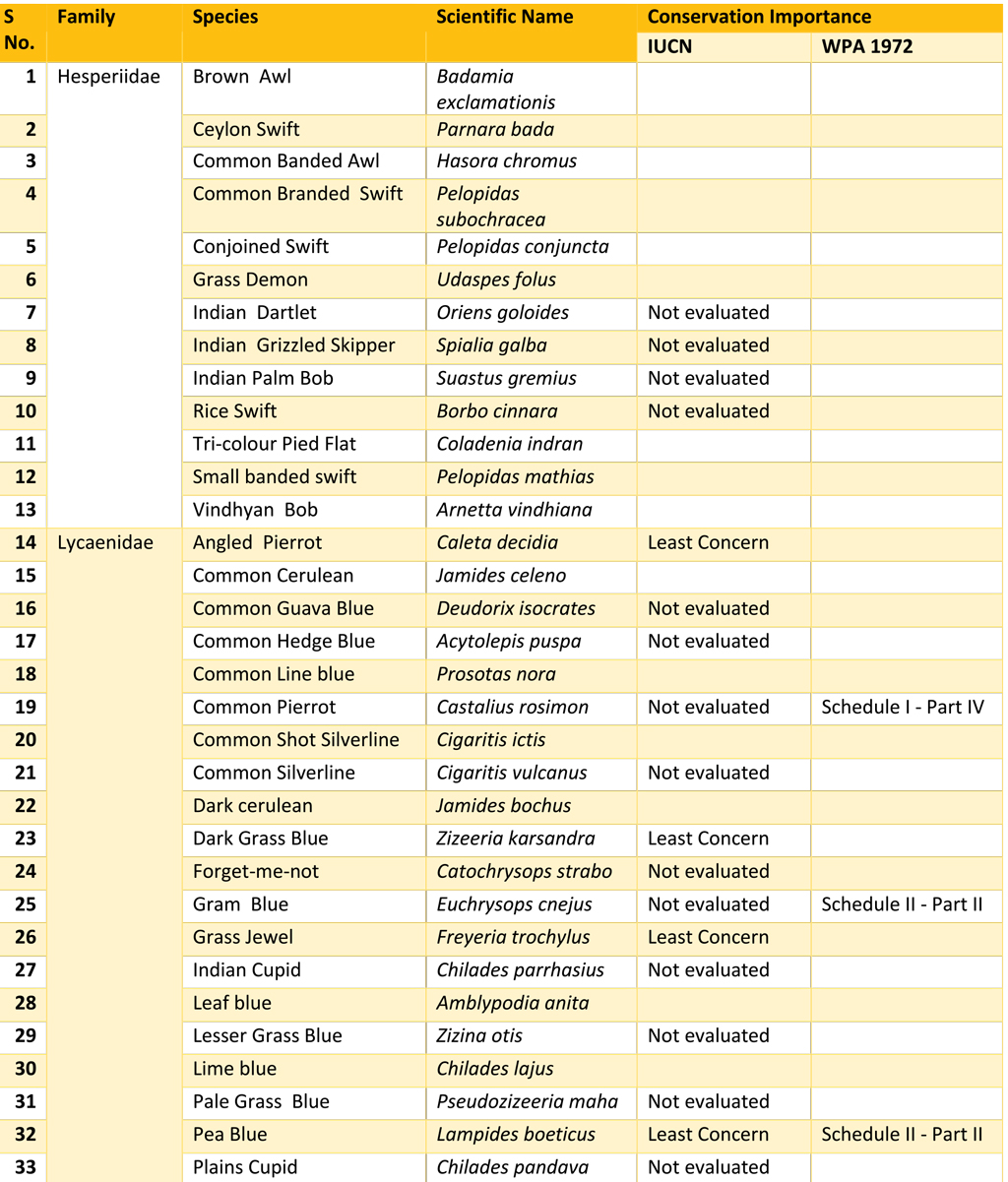
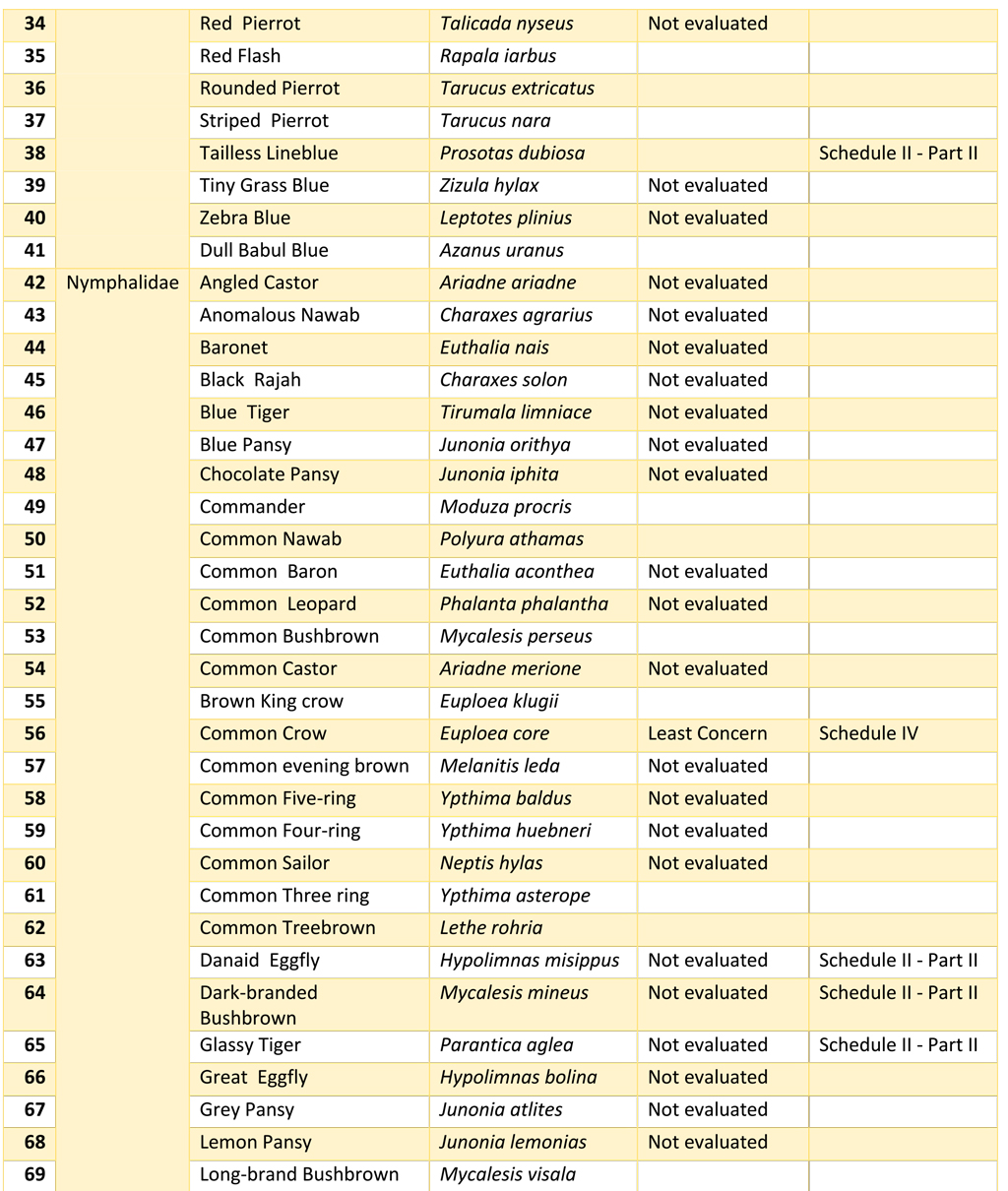
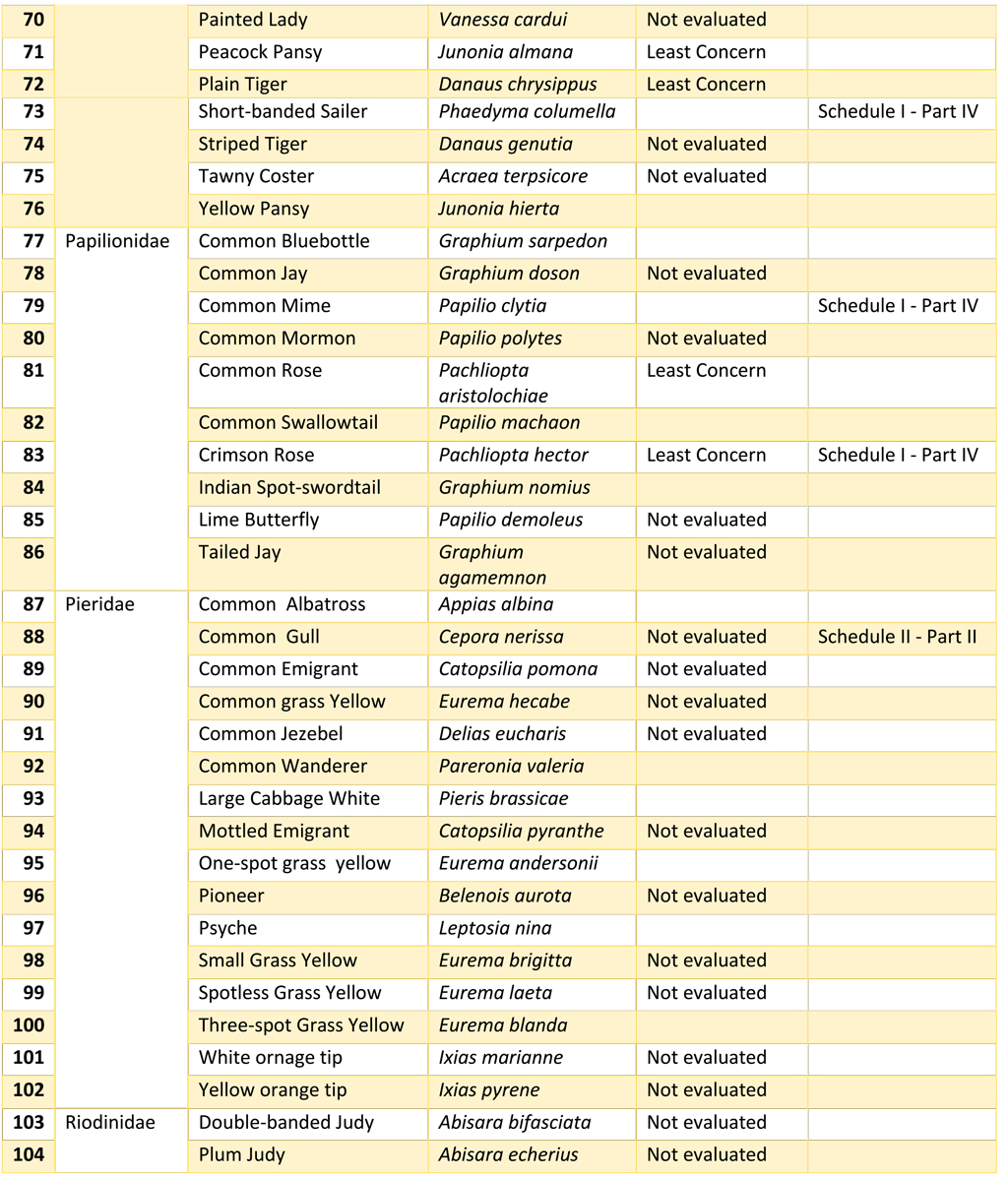
Appendix II: Pictures of Butterflies observed during the survey
